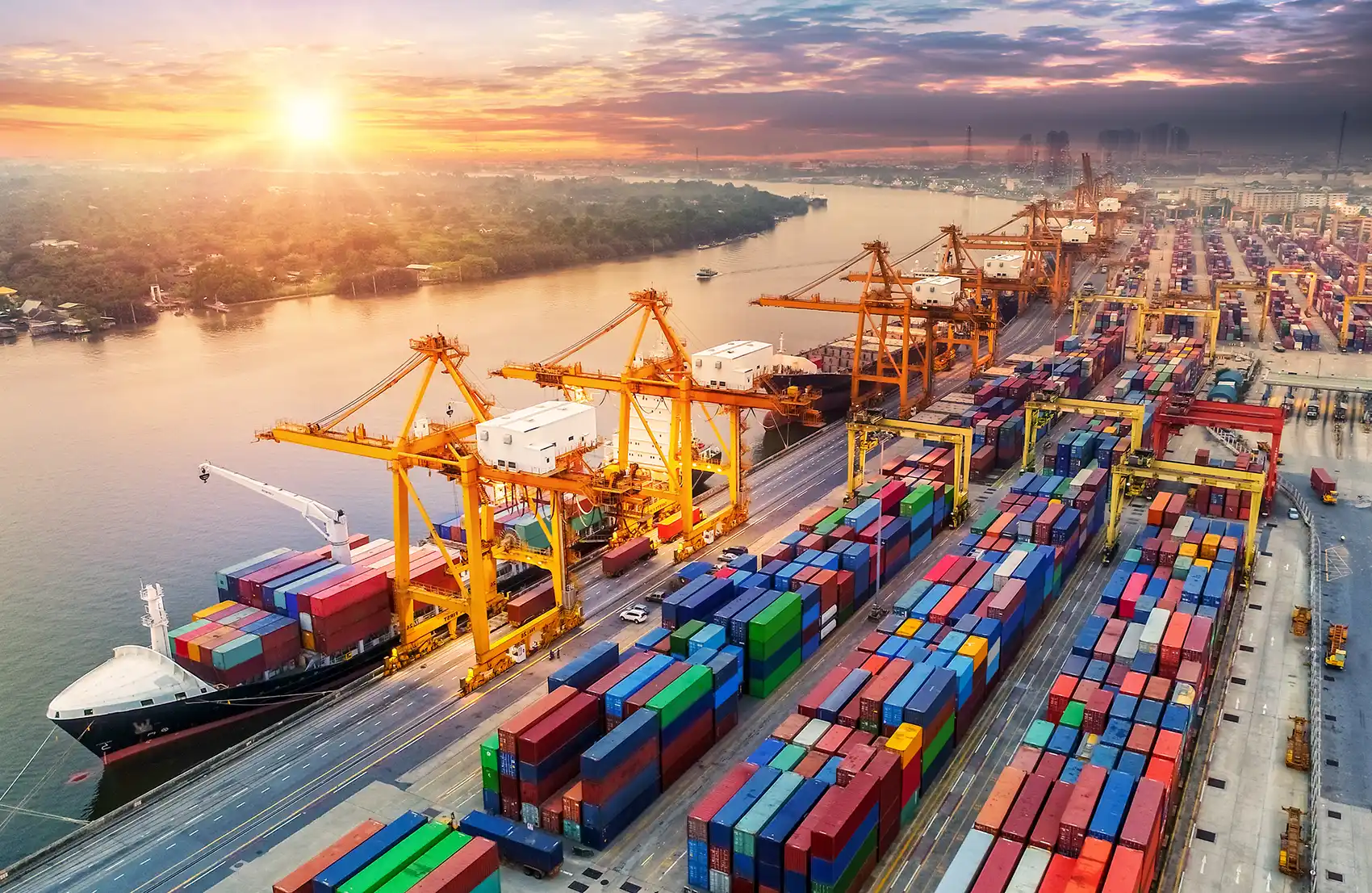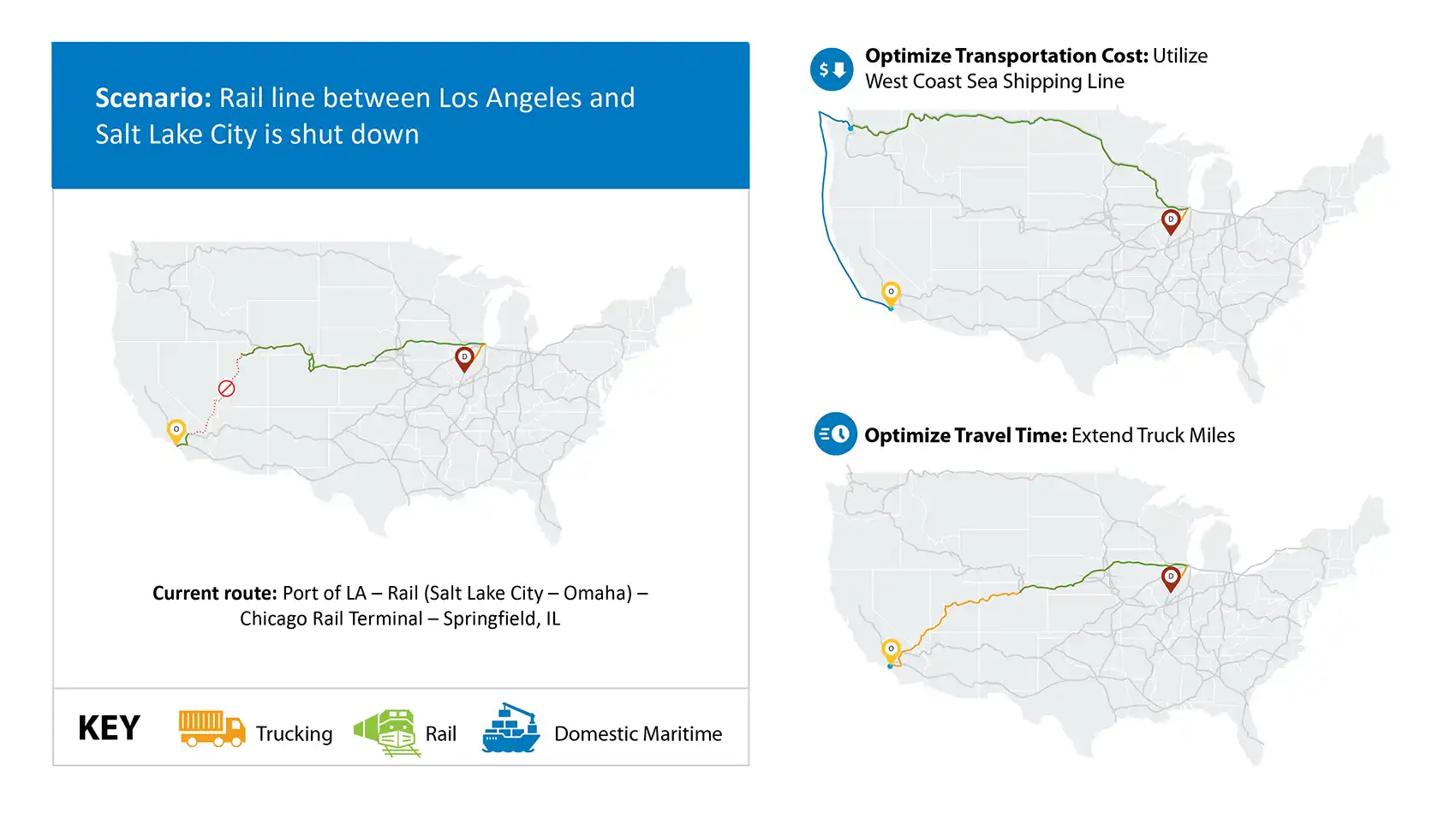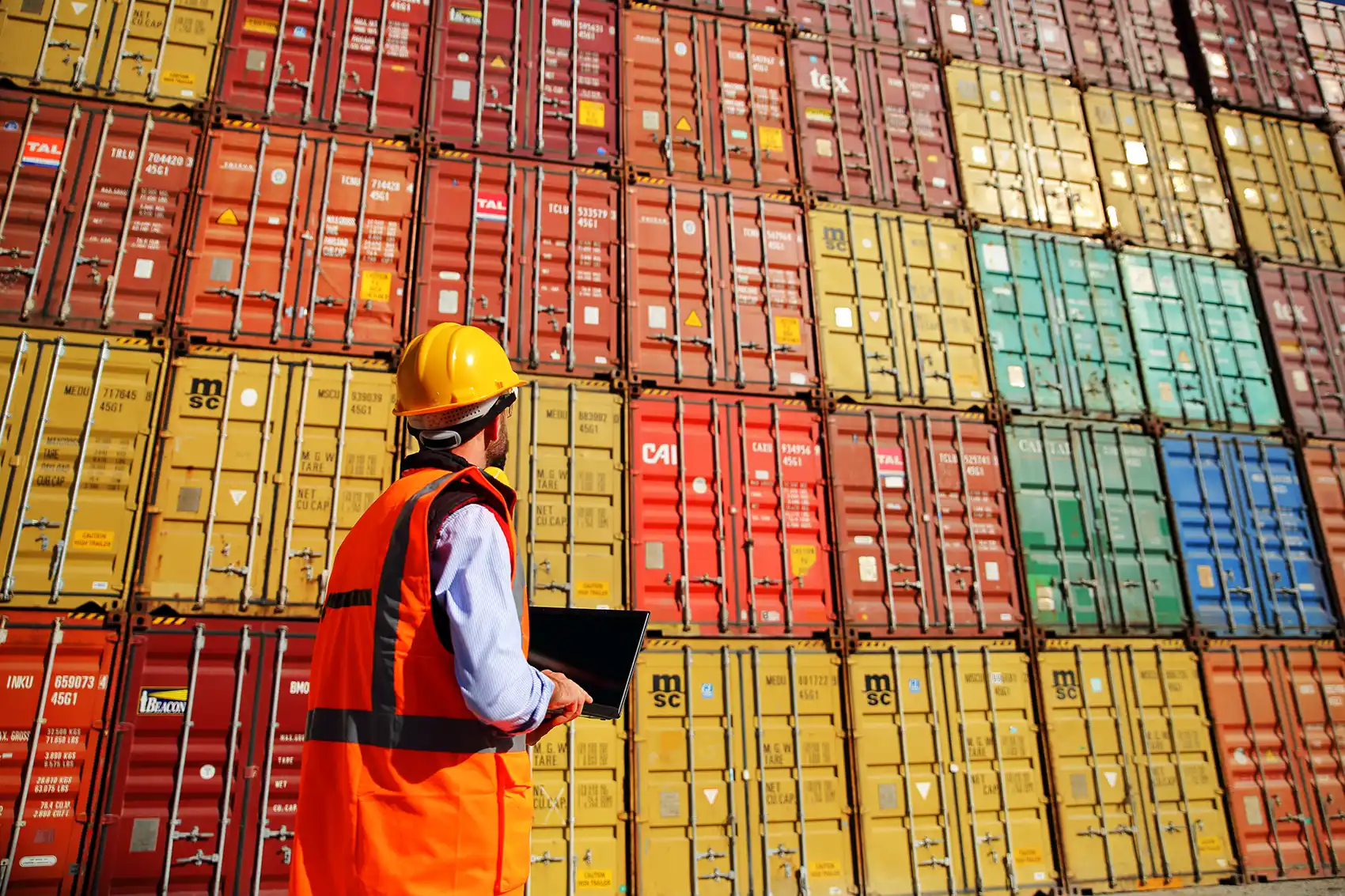NREL’s INFORMES Tool Will Accelerate the Future of Intermodal Freight
Nation’s First Model of the Intermodal Freight System Will Streamline Cost-Effective Freight Transportation

More than $3 trillion of U.S. goods were exported to the world in 2024 alone—and over the next three decades, the flow of goods and cargo across the nation is expected to grow by 50%. That figure, which would stretch today’s freight systems to the breaking point, will require the freight systems of the future to be faster, more economic, and more resilient than ever before.
To help transition the United States to the freight system of tomorrow, NREL researchers are developing the first-ever modeling tool for national intermodal freight movement, infrastructure planning, and logistics planning: INFORMES. The tool will be the nation’s first comprehensive model of the intermodal freight system and will allow for streamlined, cost-effective freight transportation on a national scale.
Funded by the Advanced Research Projects Agency–Energy (ARPA-E), the INtermodal Freight Optimization for a Resilient Mobility Energy System (INFORMES) project is a collaboration between seven industry and academia partners. Through modeling, simulation, energy demand forecasting, and a publicly accessible tool, it will support a strategic national rollout of intermodal freight technologies and guide optimized operations.

“INFORMES will tackle two pieces of the intermodal freight problem,” said Kyungsoo Jeong, an NREL commercial vehicles researcher who is leading the project. “First, we’re building the first national model of the intermodal freight system. Then, we’ll use the model to estimate the energy demands we might see from future technologies and find optimal allocations of energy infrastructure, vehicle, and terminal resources.”
Together, Jeong said, those two elements will allow NREL researchers to chart out pathways to efficient, cost-effective intermodal freight transportation far into the future.
First Model of National Intermodal Freight System
But what is intermodal freight transportation? And how could it help the nation’s freight flow more efficiently?
The intermodal freight shipping industry is built on the backs of steel and aluminum boxes called intermodal shipping containers. Measuring 20, 40, and 53 feet long, these standardized containers allow goods to safely cross oceans, train tracks, highways, and the skies. A single 20-foot intermodal container can hold 100 washing machines, 400 flat-screen televisions, or 48,000 bananas.

Intermodal freight shipping uses standardized metal containers to quickly transfer goods between ships, trains, planes, and trucks. Photo from Getty Images
Once packed full of goods—from clothing and electronics to building materials or fresh grain—intermodal containers allow for the seamless transfer of goods between the different modes of transportation. They can be quickly loaded between cargo ships, freight trains, aircraft, and trucks, depending on their final destination. In this way, intermodal freight shipping can leverage the best of each mode of freight transportation: the size and cost-effectiveness of cargo ships, the efficiency of freight trains, the speed of aircraft, and the flexibility of trucks.
Farms, retailers, and manufacturers can all use intermodal containers to ferry large quantities of goods to distribution centers, where they can eventually be dispatched to consumers. When all goes well, intermodal freight can be cost-effective and increase the freight system’s overall resilience. But each node in the logistics chain—swapping an intermodal container between a ship and a train, for instance, or from a train to a truck—poses logistical challenges. If the logistics are not handled correctly, they can create delays.
Enter INFORMES.
Over the course of the INFORMES project, team members will develop models to identify optimal deployment strategies—ones that save shippers money, time, fuel, energy, or a combination of benefits—as well as optimized operations for intermodal logistics. Then, for the first time, they will model these logistics for each mode (and combinations of modes) that comprise the national freight transportation network: the trains, ships, and trucks that allow cargo to move across the United States, including domestic movement of import and export cargo.
The INFORMES team is made up of experts from NREL, the University of Texas at Austin, University of Illinois Urbana-Champaign, the American Bureau of Shipping, Quetica Consulting & Engineering, Southwest Research Institute, and Parallel Systems. It is also overseen by an advisory board comprising representatives from C.H. Robinson, the American Transportation Research Institute, Blue Sky Maritime Coalition, the National Association of Maritime Organizations, the Port of Los Angeles, Union Pacific Railroad, and the Bureau of Transportation Statistics.
Together, these transportation experts will hone the INFORMES tool until it can guide decision makers toward optimized, cost-effective freight infrastructure deployments and efficient and resilient operations at a national scale.
“The ARPA-E INTERMODAL program is pioneering efficient pathways while simultaneously optimizing resiliency,” said Robert Ledoux, the ARPA-E program director who oversaw INFORMES’ launch. “Both aspects are essential for the future of intermodal freight transportation, as is alignment with stakeholder goals. The INFORMES project exemplifies these innovations and is making significant strides toward these critical outcomes.”

Streamlined, Cost-Effective Freight System of the Future
The INFORMES national modeling framework will be just one component of the project. Once finished, INFORMES will also be able to forecast how much energy trucks, trains, and ships need to move ever-increasing amounts of goods in the future. It will even be able to identify the effects that highly efficient new vehicle technologies, fuels, and power sources will have on the freight sector.
NREL, in particular, is bringing decades of experience modeling commercial vehicle operations to the task. The team is expanding and harmonizing a wide spectrum of technical tools in order to accurately model the nation’s future freight energy demands.
- To model freight rail operations, researchers are expanding and leveraging the capabilities of the laboratory’s Advanced Locomotive Technology and Rail Infrastructure Optimization System (ALTRIOS).
- The Airport Shuttle Planning and Improved Routing Event-driven Simulation (ASPIRES) is helping to model truck and locomotive operations.
- Expansions and iterations of multiple tools, including the Route Energy Prediction (RouteE) tool and Future Automotive Systems Technology Simulator (FASTSim), will predict the energy consumption of a given vehicle over a route now and in the future.
- And NREL’s Engage Energy Modeling Tool will help researchers model the electric distribution infrastructure and analyze the cost, land, and infrastructure implications of complex energy system decisions, like those involved in freight network planning.
After combining modularized tools developed by NREL and partner organizations into a single, comprehensive interface, the INFORMES team will be able to help large agencies like ports, transportation hubs, logistics companies, and governments design a streamlined, cost-effective transition to more efficient technologies and freight movement strategies. And they will be able to help partners see the cost and energy savings they could realize by shifting more of their operations to optimized intermodal strategies.
The team is moving quickly:
- This summer, the team hosted a virtual workshop inviting feedback from stakeholders and potential users.
- This year, they expect to launch the first version of the INFORMES modeling tool, with an improved version expected in 2026.
- Later in 2026, the publicly accessible tool will launch, opening INFORMES’ insights to wider audiences.
- And the team also plans to host a series of 2026 webinars to demonstrate the full capacity of the modeling tool.
“INFORMES leverages all of our strengths,” Jeong said. “We have in-depth experience in developing software for modeling transportation and energy systems. We have experience integrating different modularized tools into a single integrated tool. And we have a strong team of researchers and partners who can bring their specialties together to create a very comprehensive tool.”
Learn more about NREL's transportation and mobility research and its specific focus on advanced commercial vehicles. And sign up for NREL's transportation and mobility research newsletter to stay current on the latest news.
Last Updated May 28, 2025
